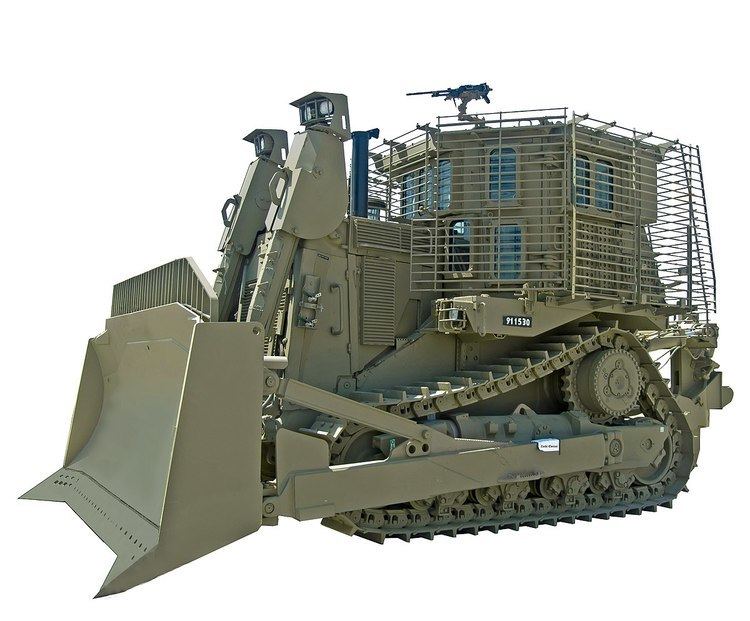 | ||
Slat armor (or slat armour, see spelling differences), also known as bar armor, cage armor and standoff armor, is a type of vehicle armor designed to protect against anti-tank rocket-propelled grenade (RPG) attacks. It takes the form of a rigid slatted metal grid fitted around key sections of the vehicle, which disrupts the shaped charge of the warhead by either crushing it, preventing optimal detonation from occurring, or by damaging the fuzing mechanism, preventing detonation outright. Although slat armor is effective against incoming missiles, it does not offer complete protection – as many as 50% of missile impacts are unimpeded by the slat design.
Contents
World War II
The German Wehrmacht was the first employer of cage armor during World War II, using Drahtgeflecht-Schürzen (English: "wire mesh skirts") to fortify its tanks against shell fire. It was found to be just as effective as the steel plate schürzen also being utilized. In March 1943, Adolf Hitler ordered all new Sturmgeschütz, Panzer III, IV, and Panthers be outfitted with schürzen of either the wire mesh or steel plate type. However, the wire mesh was not as easy to mass-produce as steel plate schürzen or armored skirts. Soviet Red Army tanks, faced with the new and highly effective German Panzerfaust, were similarly outfitted with "bedspring" armor made from expanded metal mesh grating panels.
Cold War era
In the Vietnam War, slat armor was commonly used on the sides of American patrol barges and boats. The CCB-18 is a surviving example of the Mobile Riverine Force which used such armor. Wire fencing was also placed on vehicles such as the M113 to defeat Vietcong RPGs. The Swedish Stridsvagn 103 of the same era employed a much heavier front-mounted metal grid to protect against incoming projectiles.
Modern era
In modern times, slat armor has seen use on the Israel Defense Forces (IDF) Caterpillar D9R armored bulldozer, the Force Protection Buffalo MPV MRAP vehicle, the General Dynamics Stryker, Ukrainian BTR-4, the Warrior Infantry Fighting Vehicle, the M113 APC, the British Challenger 2, the Leopard 2A6 main battle tank, and Russian T-62 tanks. Slat armor is favored over traditional plate armor not only due to its effectiveness against shaped-charge warheads, but also due to its much lighter weight, which improves maneuverability. Slat armor was first used on the Israeli IDF Caterpillar D9R armored bulldozer in 2005, but was installed in large numbers only in 2006.
In 2007, BAE Systems developed an extremely lightweight aluminum slat armor system called the LROD, which was initially used on the Buffalo MPV, and which was claimed to weigh half the amount of comparable steel designs. BAE later equipped several US Army RG-31s with a variant of the LROD system, and also developed the system for its RG-33 vehicles, the Caiman and the JERRV. Slat armor is furthermore fielded on the American M1 Abrams as part of the TUSK urban warfare series. In the Syrian Civil War, ISIS, the Free Syrian Army and Syrian Army equipped their armored vehicles with homemade slat armor to protect from rocket propelled grenade impact.
In August 2016, Russia introduced bar-slat armor developed by NII Stali and Uralvagonzavod to increase protection of Russian armored vehicles against RPG and recoilless rifle HEAT rounds by 55-60%. The armor can be integrated with a variety of old-Soviet and Russian vehicles including the BTR-50/BTR-60/BTR-70/BTR-80/82, BMP-1/BMP-2/BMP-3, BRDM-2, and T-14 Armata, with the full kit adding 1,000 kg (2,200 lb) of weight.
